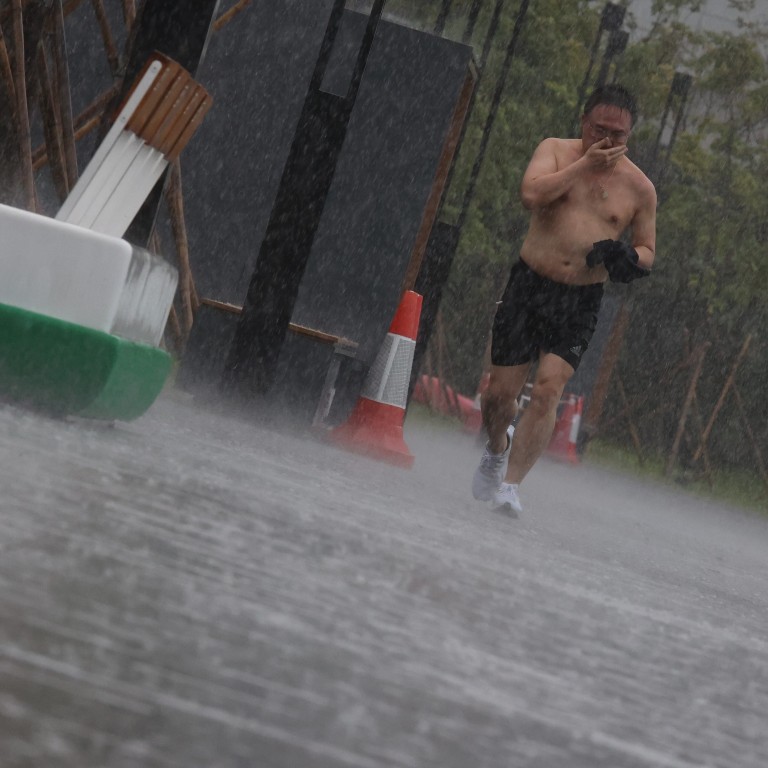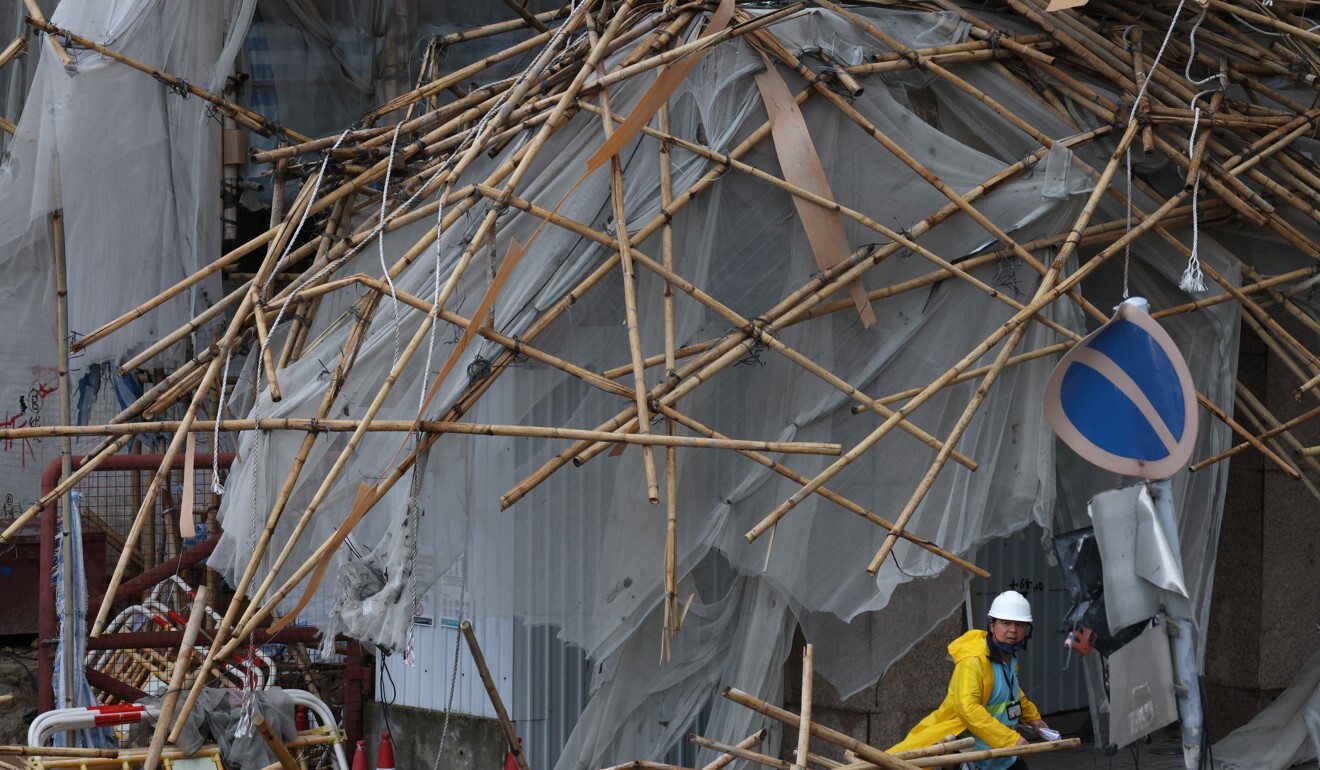
Lack of preparedness continues to hamper response to typhoons
- Detailed weather forecasting is an inexact science, and typhoon predictions more so. The timeliness of Observatory warnings and the preparedness of authorities and the community are therefore critical to public safety outcomes
The death of a construction worker caught in the wrong place at the wrong time has focused attention on the city’s response to the chaotic rain and wind conditions generated by Tropical Storm Lionrock. She died after the collapse of 30 floors of bamboo scaffolding at a Happy Valley high-rise complex in which another worker and two drivers narrowly escaped, raising questions about whether seven workers in all should have been allowed on the site at the time.
In the space of 24 hours, the city experienced typhoon signal No 3, followed by amber, red and black rainstorm warnings and then, contrary to indications until the early hours of yesterday, typhoon signal No 8 before 7am.
It would not be a typhoon season without debate about warnings and preparedness for the actual conditions when a storm hits or comes close.
Detailed weather forecasting is an inexact science, and typhoon predictions more so. Timeliness of warnings from the Observatory and the preparedness of authorities and the community are therefore critical to public safety outcomes. Both are open to debate in this case.

Despite the lessons of past typhoon emergencies, the issue remains a lack of preparedness, prompting a flood of complaints, including from parents who felt let down by the response to the black rainstorm warning at 11.45am on Friday.
An Observatory spokesman said the conditions were stronger than expected and “different from the usual situation”. But the raising of signal No 8 against all expectations with the storm hundreds of kilometres away, disrupting regular Saturday school classes and government and transport services, does nothing to inspire confidence.
When the scaffolding collapsed at 10.16am the amber rainstorm warning was still in force. It may be hindsight to question whether this was adequate at the time but, nonetheless, it is not an isolated view that the black rainstorm warning could have been issued earlier to suspend building works before people were on site.
Heavy rains lash Hong Kong as No 8 tropical storm warning remains in force
The lack of preparedness was not just reflected in the traffic chaos on major roads caused by widespread flash flooding, but on social media, where many angry parents criticised the Observatory and the Education Bureau for only shutting down kindergarten classes before the black rainstorm warning, leaving older children exposed. There may be room for better communication between the two.
The question remains whether more could be done to avoid tragedies such as the fatality in Happy Valley. For example, if there were a clearer official warning mechanism would bosses and workers be more alert to the possible dangers of outdoor work in extreme weather conditions? So long as such weather remains unpredictable, the authorities must be flexible in their response to all contingencies.

